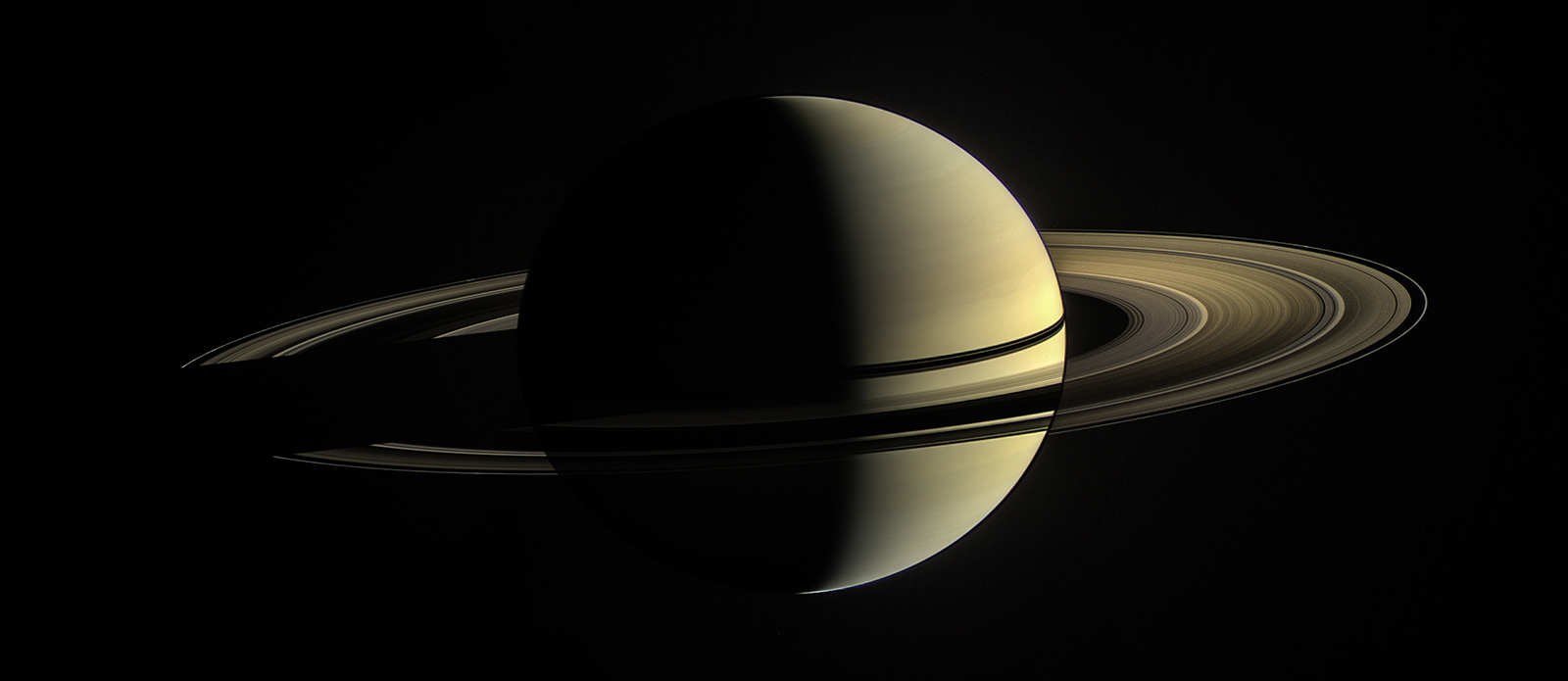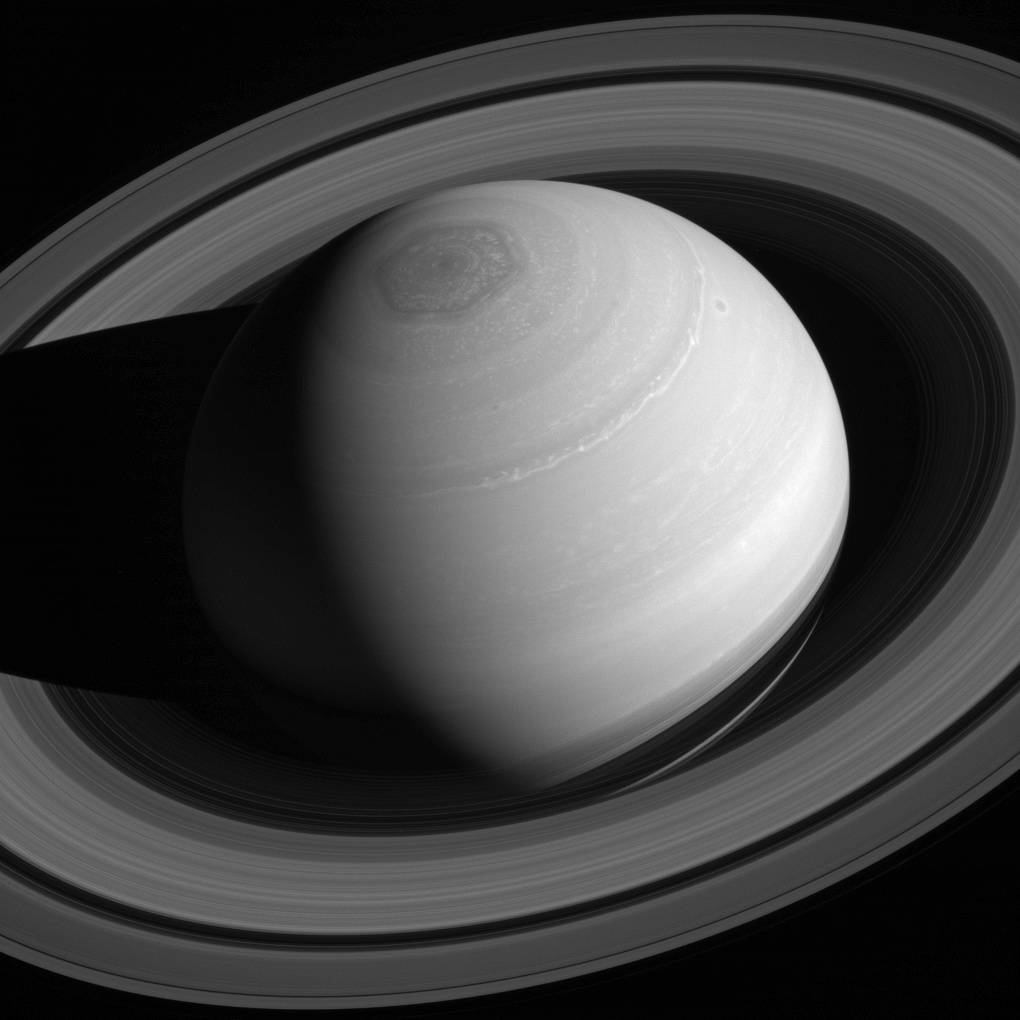Three recent studies by scientists at NASA’s Ames Research Center in California’s Silicon Valley examine data from NASA’s Cassini mission and provide evidence that Saturn’s rings are both young and ephemeral – in astronomical terms, of course.

While no human could ever have seen Saturn without its rings, in the time of the dinosaurs, the planet may not yet have acquired its iconic accessories – and future Earth dwellers may again know a world without them.
Three recent studies by scientists at NASA’s Ames Research Center in California’s Silicon Valley examine data from NASA’s Cassini mission and provide evidence that Saturn’s rings are both young and ephemeral – in astronomical terms, of course.
The new research looks at the mass of the rings, their “purity,” how quickly incoming debris is added, and how that influences the way the rings change over time. Put those elements together, and one can get a better idea of how long they’ve been around and the time they’ve got left.
The rings are almost entirely pure ice. Less than a few percent of their mass is non-icy “pollution” coming from micrometeoroids, such as asteroid fragments smaller than a grain of sand. These constantly collide with the ring particles and contribute debris to the material circling the planet. The rings’ age has been hard to pin down, because scientists hadn’t yet quantified this bombardment in order to calculate how long it must have been going on.
Now, one of the three new studies gives a better idea of the total arrival rate of the non-icy material and, thus, how much it should have “contaminated” the rings since their formation. The analysis also indicates the micrometeoroids aren’t coming in as fast as scientists thought, which means Saturn’s gravity can pull the material more effectively into the rings. These lines of evidence add up to say the rings could not have been exposed to this cosmic hailstorm for more than a few hundred million years – a small fraction of the 4.6-billion-year age of Saturn and the solar system.
Backing up this conclusion is the second paper, which takes a different angle on the constant battering of the rings by tiny space rocks. The study’s authors identified two things that have been largely neglected in research. Specifically, they were looking at the physics governing the long-term evolution of the rings and found that two important elements are micrometeoroid bombardment and the way debris from those collisions gets distributed within the rings. Taking these factors into consideration shows the rings could have reached their current mass in just a few hundred million years. The results also suggest that, because they are so young, they most likely formed when unstable gravitational forces within Saturn’s system destroyed some of its icy moons.

“The idea that the iconic main rings of Saturn might be a recent feature of our solar system has been controversial,” said Jeff Cuzzi, a researcher at Ames and co-author on one of the recent papers, “but our new results complete a trifecta of Cassini measurements that make this finding hard to avoid.” Cuzzi also served as the Cassini mission’s interdisciplinary scientist for Saturn’s rings.
Saturn, then, may have been around more than 4 billion years before adopting its current look. But how much longer can it count on sporting the beautiful rings we know today?
The Cassini mission discovered the rings are losing mass quickly, as material from the innermost regions falls into the planet. The third paper quantifies for the first time how fast ring material is drifting in this direction, and meteoroids, again, play a role. Their collisions with existing ring particles and the way the resulting debris gets hurled outward combine to create a sort of conveyor belt of motion carrying ring material in toward Saturn. By calculating what all that jostling of particles means for their eventual disappearance into the planet, the researchers arrive at some tough news for Saturn: it may lose its rings in the next few hundred million years.
“I think these results are telling us that constant bombardment by all this foreign debris not only pollutes planetary rings, it should also whittle them down over time,” said Paul Estrada, a researcher at Ames and co-author of all three studies. “Maybe Uranus’ and Neptune’s diminutive and dark rings are the result of that process. Saturn’s rings being comparatively hefty and icy, then, is an indication of their youth.”
Young rings but – alas! – relatively short-lived, as well. Instead of mourning their ultimate demise, though, humans can feel grateful to be a species born at a time when Saturn was dressed to the nines, a planetary fashion icon for us to behold and study.
Learn more:
NASA in Silicon Valley podcast: Jeff Cuzzi Talks About Saturn and the Many Things Cassini Taught Us
For researchers:
The three papers from NASA Ames researchers and their partners are:
- “Micrometeoroid infall onto Saturn’s rings constrains their age to no more than a few hundred million years,” published in Science Advances, May 12, 2023.
- “Constraints on the Initial Mass, Age and Lifetime of Saturn’s Rings from Viscous Evolutions that Include Pollution and Transport Due to Micrometeoroid Bombardment,” published in Icarus, May 11, 2023.
- “Large Mass Inflow Rates in Saturn’s Rings due to Ballistic Transport and Mass Loading,” published in Icarus, May 11, 2023.
For news media:
Members of the news media interested in covering these topics should reach out to the Ames newsroom.


























